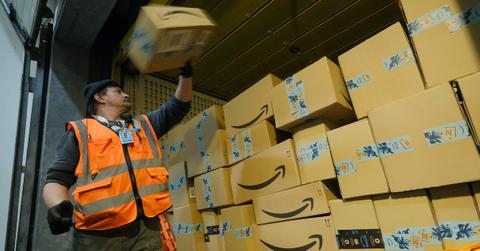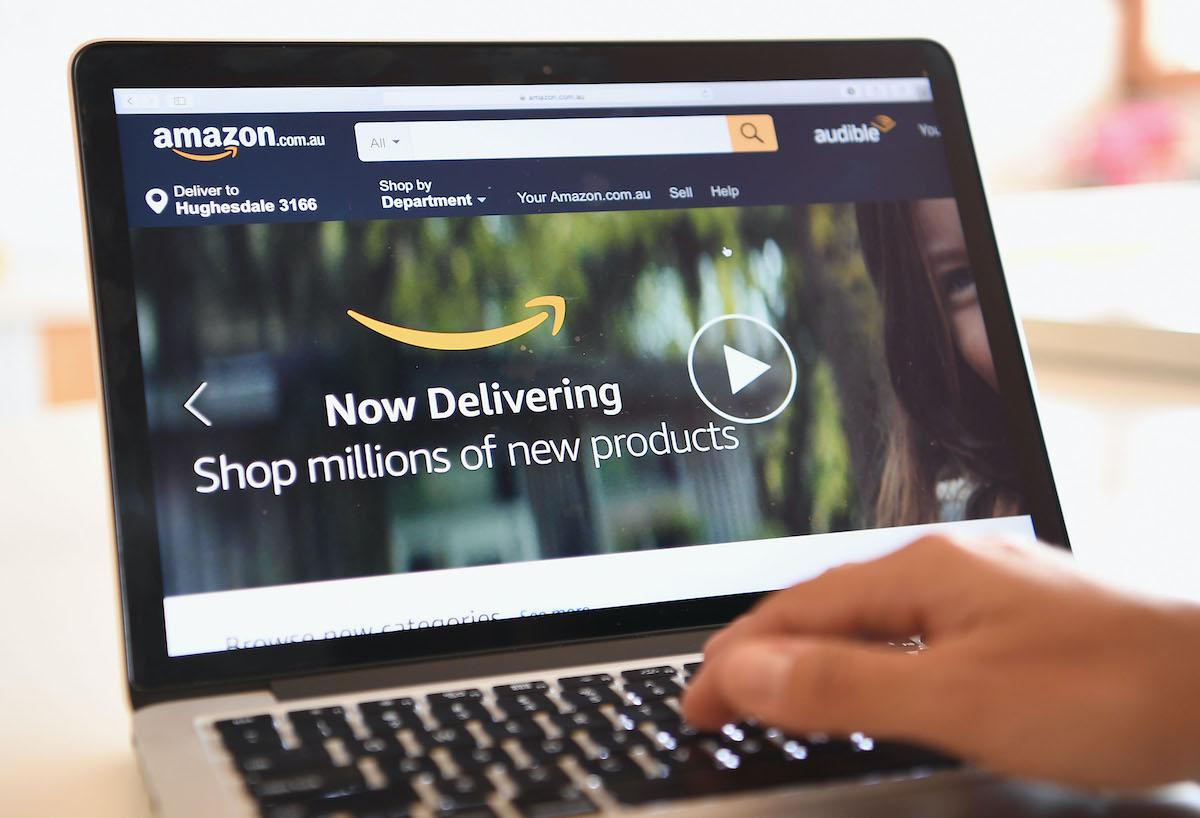Your Amazon Returns May Wind Up in the Trash, According to GPS Trackers
What happens to Amazon returns?
Updated Dec. 30 2020, 12:28 p.m. ET

Websites like Amazon make processing a return almost as easy as placing a one-click order — but what happens to Amazon returns? Are they added back to inventory? Donated? Recycled? Are they ever — gulp — thrown away?
A recent investigation monitored the trajectory of a series of Amazon returns with stealthily-placed GPS trackers, and the results provide a lot of insight on where Amazon returns wind up. Keep reading to find out the results of the investigation, and for more information on what Amazon (and other online companies) do with your returned merchandise.
Hidden GPS trackers trailed 12 Amazon returns.

To find out once and for all what Amazon does with returned products, Canadian news outlet CBC Marketplace recently partnered with the Basel Action Network, an environmental justice nonprofit that tackles three toxic waste streams: e-waste, cargo ships, and plastic pollution.
For the investigation, CBC Marketplace purchased 12 random household items from Amazon Canada, including a coffee maker, faux leather backpack, overalls, a printer, toys, and a tent. The team attached a GPS tracker inside each item, and returned them all to Amazon.
As of a few months after processing the returns, only four of the 12 items have been resold to new customers. Several of the returned items are still in Amazon warehouses, some are still in transit, one was found in a landfill (the backpack, which was in mint condition), and one was found at an e-waste recycling and product destruction facility (the overalls, weirdly).
Many of the returned items traveled for hundreds of miles before arriving at a new home or back in a warehouse. For example, a set of toy blocks traveled more than 950 kilometers (590 miles) before winding up with a new customer, and a printer traveled more than 1,000 kilometers (621 miles) while “circling around,” without a final destination being reported, according to CBC Marketplace.
So while Amazon may consider the price of shipping items to Prime customers and back “free,” one must read between the lines to see the environmental price. Not only do returns rack up emissions from travel, but in some instances, the items you return may wind up in a landfill, where they will emit methane.
What happens to Amazon returns?
Based on the above experiment, it would seem that Amazon returns are sometimes resold to new customers, thrown away, or remain in a limbo state for a while, either inexplicably traveling around on a truck or sitting in a warehouse (perhaps awaiting being sold via Amazon Warehouse or via liquidation).
Amazon actually liquidates a lot of its returned merchandise. Amazon’s team either does so by selling the goods themselves on Amazon Warehouse, or by selling it to e-commerce liquidation websites. On these websites, customers can bid on mystery “pallets” of returned merchandise, which most buyers then try to resell, according to The Atlantic. Unfortunately, many of the items in these pallets are in imperfect condition, and if the buyers cannot resell them, they’ll just wind up throwing the products away.
Why do companies trash returned merchandise?
It sounds pretty backwards, but for huge companies like Amazon, it’s sometimes cheaper to throw away merchandise rather than bother repackaging it, adding it back to inventory, storing it, and shipping it out again.
Brick-and-mortar stores receive less returns than online stores — as Rutgers University professor Kevin Lyons told CBC Marketplace, customers return 30 to 40 percent of all online purchases, while customers only return less than 10 percent of goods bought in-person. But still, plenty of brick-and-mortar stores have also been found guilty of tossing returned or imperfect merchandise in the trash (to the joy of dumpster divers).
Here’s how you can avoid your returned merchandise being thrown away.
Shopping from smaller companies instead of Amazon is often a better choice for so many reasons, one of which being that a small business is far less likely to toss merch, as their inventory is likely more valuable to them. If you do purchase an Amazon item that you realize doesn't suit your needs, it’s perfectly understandable that you’d like to return it and get your money back — but before doing so, consider trying to sell or regift the item yourself instead.
There are also a few ways to make your Amazon shopping experience greener, for those instances where Amazon is your only option. First, add an AmazonSmile charity to your account, so that a portion of the proceeds from each of your purchases goes to a cause you care about. You can also shop from Amazon Warehouse, where you’ll find secondhand and returned items for sale, typically for reduced prices. You can also follow our guide to requesting plastic-free packaging for all your Amazon orders.
And most importantly, consider shopping from other retailers that are more transparent about what happens with their returned merchandise, among other business practices.